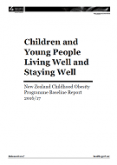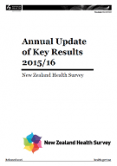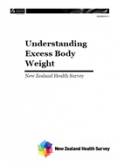This page provides introductory statistics about obesity in New Zealand as well as links to statistical publications.
Adult obesity statistics
The New Zealand Health Survey 2020/21 found that:
- around 1 in 3 adults (aged 15 years and over) were classified as obese* (34.3%), up from 31.2% in 2019/20
- there was a significant increase from 2019/20 to 2020/21 for women (31.9% to 35.9%), but not for men
- the prevalence of obesity among adults differed by ethnicity, with 71.3% of Pacific, 50.8% of Māori, 31.9% of European/Other and 18.5% of Asian adults obese
- adults living in the most socioeconomically deprived areas were 1.6 times as likely to be obese as adults living in the least deprived areas**
Child obesity statistics
The New Zealand Health Survey 2020/21 found that:
- around 1 in 8 children (aged 2–14 years) were classified as obese (12.7%), up from 9.5% in 2019/20. Prior to this, the rate of obesity among children had been relatively stable
- the prevalence of obesity among children differed by ethnicity, with 35.3% of Pacific and 17.8% of Māori obese, followed by 6.6% of Asian and 10.3% of European/Other children
- children living in the most socioeconomically deprived areas were 2.5 times as likely to be obese as children living in the least deprived areas**
For more information refer to the Annual Update of Key Results 2020/21: New Zealand Health Survey.
*Obese is defined as a person having a body mass index (BMI) of 30 or more (or equivalent for those younger than 18 years).
**Adjusted for differences in age, sex and ethnicity.



